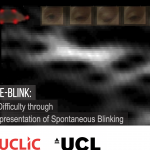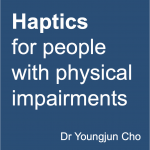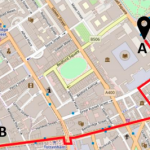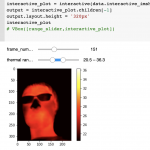Haptic feedback interface in navigation systems for visually impaired and blind people: a systematic review
Preprint 2021 Bei Xia and Youngjun Cho Background: It is often challenging for visually impaired people to navigate independently. To help this, an increasing number of studies have explored navigation systems for visually impaired users. Particularly, the ways that the users communicate with such systems through touch have been actively ...
The Effect of Binaural Beats blended with Classical Music on State Anxiety Reduction
Preprint 2021 Yuxuan Liu and Youngjun Cho While alpha binaural beats and classical music treatment have been actively explored in alleviating state anxiety, no previous research has looked into a possibility of blending the two subtle interventions for amplifying their mental wellbeing benefit in daily settings. We hypothesize that classical ...
Accessibility and Distance Perception in Virtual Reality Head-Mounted Displays for People with Dyspraxia
Preprint 2021 Virtual reality (VR) has great potential as a technological intervention for disabled people. However, most human factor research into VR does not consider people with motor learning disabilities. Here, we consider the accessibility challenges faced by people with dyspraxia when using the current generation of VR head-mounted displays ...
User Interfaces in Autonomous Vehicles: Understanding Trends and Challenges for Visually Impaired Drivers
Preprint 2021 S Oh, C Holloway and Y ChoDepartment of Computer Science, University College London, London, UK Fully autonomous vehicles are emerging, potentially benefitting the visually impaired community. However, people with visual impairment have been by and large excluded in designing infotainment systems and interactive features in traditional vehicles. This ...
Understanding health benefits of fitness trackers during the COVID-19 Lockdown
Preprint 2021 Yuliang Chen and Youngjun Cho Department of Computer Science, University College London, London, UK Fitness trackers have gained much attention as daily physiological computing intervention to promote self-monitoring and self-regulation. This paper investigates the usage patterns and perceived health benefits of commercial fitness trackers before and during the ...

Rethinking Eye-blink Toolkit @CHI2021
Source codes are available at https://github.com/deepneuroscience/Rethinking-Eye-blink. Rethinking Eye-blink: Assessing Task Difficulty through Physiological Representation of Spontaneous Blinking Abstract:Continuous assessment of task difficulty and mental workload is essential in improving the usability and accessibility of interactive systems. Eye tracking data has often been investigated to achieve this ability, with reports on ...

Haptics for Disabled People
Haptic technologies have enriched the ways we interact with people, computing agents and environments [1-3,6-10]. For the visually impaired community, the haptic modality has played a key role in way-finding applications [1,4-5]. Haptic smart cane is an example that has been shaping the way visually impaired people navigate on streets ...

Crowdsourcing physiological stress in wheelchair users during navigation
There are over 1.2 million wheelchair users in the United Kingdom. And the number is set to rise in line with a growing and ageing population. Many wheelchair users face a variety of stressors of navigating in a city, such as crowdedness, potholes, temporary constructions [2,3]. It has shown that ...

TIPA Opensource Project: Thermal Imaging-based Physiological and Affective computing toolkit
Mobile thermal imaging has created a new pathway to physiological measurements and affect recognition [1]. It enables contactless, simultaneous measurements of multiple vital signs and affective states. This can benefit healthcare, fitness sectors and specific user groups; for example, people with chronic pain who tend to reduce the number of ...

UCL Grand Challenges: Developing Solutions
Authors: UCL Grand Challenges Team and Dr Youngjun Cho (GDI Hub & UCL Interaction Centre) The Global Disability Innovation Hub is challenging assumptions about disability and the design of assistive technology. The GDI Hub takes an inclusive approach that draws on the expertise of disabled people, practitioners, academics and the ...